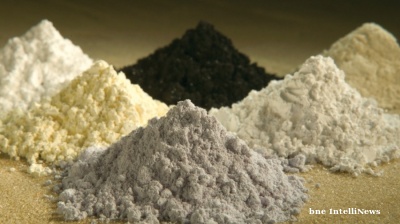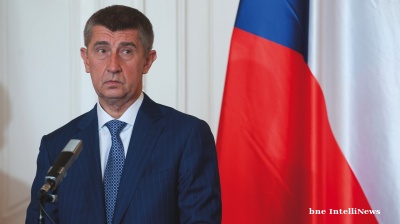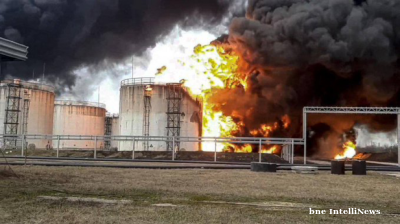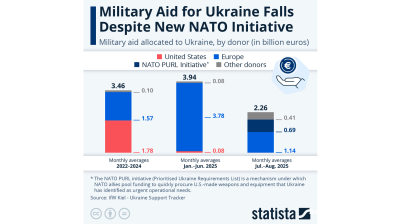Many investors’ previous expectations that the coronavirus epidemic would follow the same scenario as previous outbreaks – i.e., peaking in 2 months – did not materialize: reports indicate a rapid, global spread of the infection. Even Chinese experts, who just a week before announced that the COVID-19 virus in PRC would be fully defeated in March, have now shifted the victory date to April.
Although the IMF is still betting on a V-shaped recovery of the global economy after the epidemic, the delay of the victory and the rapid spread of the virus around the world significantly change the potential macroeconomic consequences.
Instead of a 2-3-month local epidemic, the global pandemic is now becoming the base-case scenario for the next 6 months at least. Such a shift in the timetable significantly impacts the macroeconomic fallout – it is not only an interruption in transportation, trade relations and production chains, but also a sharp rise in pressure on state coffers and regulators, who will be forced to focus on maintaining social and financial stability.
Obviously, the consequences of the new crisis will vary for different economies – those that depend heavily on external growth drivers — from tourism to the exports or imports of goods and components – will be hit harder.
For over a quarter of a century, as globalisation developed, most leading national economies have become interdependent, albeit to a varying degree depending on the individual country.
The ‘old’ economies – including most developed countries – have more of an ability to withstand a sharp reduction in or complete halt to external relations. As a rule, they also have more financial opportunities to support their producers and to safeguard employment.
At the same time, many ‘new’ economies are much more vulnerable to rising external risks, since, as a rule, they are more involved in global economic chains and are more dependent on external demand for their products. In addition, many of these countries – for example, in Asia – also very much rely on tourism.
Based on the trends of the past few weeks, as well as the reaction of world governments and central banks to the crisis, we can generally outline how the situation will develop in the coming weeks and what the macroeconomic consequences may be. Obviously, in case of a pandemic, the first hit would be export-oriented sectors: transport, tourism, hospitality and catering and foreign trade operations. However, as many economies are interrelated, the consequences of the pandemic can be much deeper – for many companies, there is a growing risk of export restrictions and disruptions to the supply of components. A plunge in global trade could also lead to a shortage of consumer goods, including food. This, in turn, will inevitably increase inflationary pressures.
Recent reports suggest that governments and financial regulators are tending to stick to traditional methods in responding to the crisis: on the one hand, further restricting the movement of people and goods, and on the other, supporting local producers to prevent negative social consequences if companies go bankrupt. Although the resources of most central banks are already rather limited – in many countries, rates are at historical lows – they are unlikely to avoid moves to further mitigate monetary policy in one form or another. As for governments, the situation is more complicated, as in most countries the bag of tricks to enlarge growth incentives is limited due to the lack of fiscal capabilities.
Nevertheless, the situation is not as hopeless (judging by the market reaction) as most investors currently see it. First, we highlight that the timing of the epidemic across countries and regions does not coincide: for example, China, where the epidemic began, could recover from the crisis earlier than others – as soon as the beginning of 2Q20. Recent reports from China indicate that many businesses are returning to normal operations, meaning that the risk of significant interruptions in the supply of goods and components from this major global industrial centre will soon begin to decline. Also, the government’s tough preventive measures to contain the epidemic, as well as experience gained in combating the new disease, can significantly reduce the negative consequences of the pandemic and, possibly, reduce its duration in other countries or regions of the world.
Russian economy in stronger position, but not immune to consequences
There is no doubt that in the event of a coronavirus pandemic, Russia will not be immune. The main risk for the Russian economy is associated with a significant drop in external demand for major exports – commodities. Moreover, it is not just the falling prices that would hit the economy, but also possible difficulties with the delivery of exported goods if trade restrictions persist or intensify.
Other risk factors are a disruption or reduction in the supply of goods and components from abroad, as well as a sharp decrease in tourist flows. The pandemic would hit not only transport companies and the service sector, but also many enterprises that import components – that is, a significant part of the Russian engineering industry, including the automotive industry, aircraft manufacturing and the defence complex.
Even if an epidemic in Russia is avoided, local retailers may face a growing shortage of consumer goods, including food. At the same time, we note the negative impact on prices from the already weakening ruble rate – as a result, in four to six weeks we may witness a surge in inflationary pressure (traditionally in the second quarter, the share of imports in the Russian consumer basket reaches its annual maximum).
We also highlight potential changes in consumer behaviour: with any crisis, Russian consumers switch to savings behaviour, which primarily affects the demand for more expensive goods and services – real estate, cars, durable goods and, of course, tourist services.
All the above is bad news for the financial sector, which would most likely come under double pressure from the plunging demand and general worsening of the macroeconomic environment.
From a macroeconomic point of view, the duration of the crisis is key to predicting its consequences. If the coronavirus epidemic or pandemic lasts no more than 6 months (this week would mark the start of a third month since the outbreak in Wuhan, China), then the Russian economy could lose, in our estimation, up to 0.6-1 ppts in its growth in 2020. Thus our FY GDP forecast could drop to 1-1.4% from 2%. Moreover, in the case of a rapid recovery of the global economy after the crisis ends, we may well see acceleration in economic growth in Russia, possibly from 2H20. This may force us to revisit our 2021 GDP forecast, upgrading it from 2.3% to 2.5-2.7% year on year.
In addition to the direct consequences of the crisis – such as a reduction in trade, tourism, demand for commodities and disruptions in the supply of goods and components – economic growth could be significantly affected by a change in the government’s economic agenda. It would be natural to expect a transition in government policy from supporting growth through investments (national projects) to crisis management, primarily via an increase in financial support for systemically important enterprises. In this environment, major deals with a long-term effect – such as national projects, the sale of Sberbank stake, etc. – may be delayed: in a crisis, the consolidation of all financial resources will be an absolute priority. This may mean that for the majority of 2020, the Russian economy may lose its main growth driver (state spending) due to lower government investment in infrastructure and other national projects.
Another consequence of the crisis for Russia may be impaired financial stability due to the weakening ruble and consequent spike in inflation. While we reiterate our FY20 inflation forecast at 3.8% y/y, we believe that the range of realistic inflation estimates is clearly shifting upwards – to 3.5-4.5% y/y. In the new environment, the Central Bank is unlikely to continue with accommodative monetary policy. On the contrary, if the global situation continues to deteriorate, the probability of a key rate hike with a reversal in the inflation trend could sharply rise as soon as in 2Q20 – something that until recently was not considered in any macro scenario.
While we expect the negative effect of the epidemic in many areas of the Russian economy to be rather significant, it should be noted that some sectors may receive additional support for growth as a result of the crisis. First of all, this applies to local market-oriented producers of consumer goods – pharmaceuticals, agriculture, food and light industry. Fuelled by the ongoing crisis and global inflation, rising demand for gold will support gold producers; the utilities sector will also find itself in a more stable position. Despite a significant drop in commodity prices, financials of many oil and gas exporters will also look better off than the economy as a whole, especially if OPEC+ manages to restore uniformity and coordination when it comes to efforts aimed at cutting production.
We do not anticipate slower growth rates and a worsening macro environment in Russia due to the coronavirus to lead to a significant flight of capital from the country. The reason is a rather solid situation with the budget, debt and reserves, as well as the government’s vast experience in crisis management. In fact, Russia is, perhaps, the only country in the world that, over the past 6 years, has been actively preparing for complete isolation due to the constantly increasing sanctions pressure from the West. This makes investing in Russian assets a safer bet vs other EMs, while Russia’s reserves significantly exceeding its total external debt means that the risk of default when investing in most local fixed-income instruments is practically non-existent. Thus, while volatility and a slight weakening of Russia’s domestic currency, amid increasing pressure on the budget, cannot be avoided, we see the scenario of the ruble’s collapse and deep destabilisation of the country’s financials as extremely unlikely.
All of the above applies to the analysis of the purely economic consequences of the pandemic for Russia. However, recent events in Syria, where Russia and Turkey are on the verge of an armed conflict, show that geopolitical risks should also be taken into account when assessing Russia’s investment potential and macroeconomic trends.
It is often extremely difficult to predict them, but they can have great influence on sentiment, lead to a quick reversal of capital flows and put more pressure on the ruble and the level of macroeconomic stability in the country.
Opinion

IMF: Global economic outlook shows modest change amid policy shifts and complex forces
Dialing down uncertainty, reducing vulnerabilities, and investing in innovation can help deliver durable economic gains.

COMMENT: China’s new export controls are narrower than first appears
A closer inspection suggests that the scope of China’s new controls on rare earths is narrower than many had initially feared. But they still give officials plenty of leverage over global supply chains, according to Capital Economics.

BEYOND THE BOSPORUS: Consumed by the Donald Trump Gaza Show? You’d do well to remember the Erdogan Episode
Nature of Turkey-US relations has become transparent under an American president who doesn’t deign to care what people think.

COMMENT: ANO’s election win to see looser Czech fiscal policy, firmer monetary stance
The victory of the populist, eurosceptic ANO party in Czechia’s parliamentary election on October 6 will likely usher in a looser fiscal stance that supports growth and reinforces the Czech National Bank’s recent hawkish shift.




